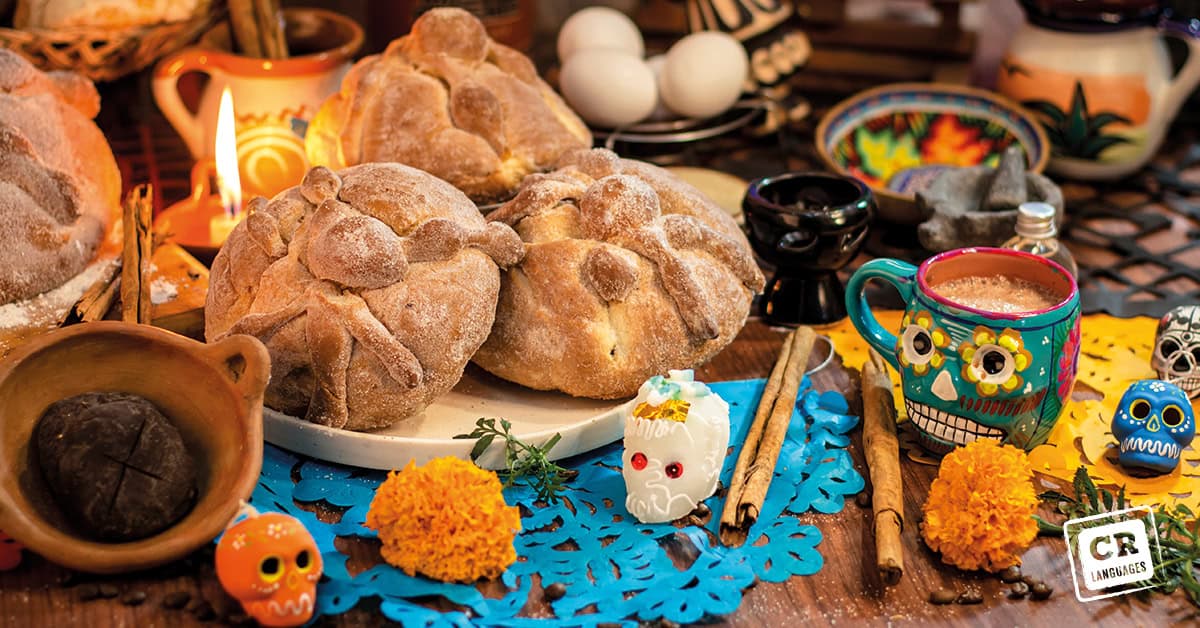Día de muertos – Day of the Dead in Mexico
Día de Muertos (Day of the Dead) is one of Mexico’s most iconic celebrations, rich in history and cultural significance. This annual event, which takes place on November 1st and 2nd, is not just a remembrance of the deceased but a colorful celebration of life, love, and memory. The holiday dates back to ancient Mesoamerican times, evolving over centuries through a blend of indigenous traditions and Spanish Catholic customs. Despite regional variations and the influence of modern media, Día de Muertos has retained its essence—a heartfelt, joyful connection to ancestors and loved ones who have passed on.
The tradition centers around creating ofrendas, or altars, where families place photographs, marigolds, candles, favorite foods, and other cherished items of the deceased. In recent years, Día de Muertos has garnered international attention, partly through popular culture, like the stunning visuals in Disney’s Coco, which introduced the world to the idea of a “land of the dead.” Events like the catrina parades have also gained popularity after being featured in major films, presenting new imagery that intertwines with tradition.

About Isidro:
Isidro, one of our dedicated Spanish instructors at CR Languages, brings a wealth of expertise and cultural insight to his classes. Originally from Mexico, Isidro holds a diploma in teaching Spanish as a second language and has years of experience helping students achieve fluency. As a native Mexican, Isidro shares his personal memories of Día de Muertos, giving us an authentic glimpse into this cherished tradition. Here, he reflects on the unique ways his family celebrated this iconic holiday:
“The most well-known Mexican celebration in the world is undoubtedly the Day of the Dead. The tradition must be very old, as it is explained as a syncretism between the Catholic tradition brought by the Spanish during the viceroyalty and pre-Columbian Mesoamerican traditions. As old as it is, it has not always been celebrated in the same way as it is today, nor is it the same throughout Mexico.
One of the elements that have been added to this festivity is the parade of“catrinas” and other characters related to the Day of the Dead. Although the tradition of painting one’s face like a skull has existed for some time, it has only been in recent years that people have begun to dress up completely as a“catrín” or“catrina” to participate in the Day of the Dead parade. These parades became popular after Hollywood depicted one in one of the 007 movies.
Disney has also done its part to add a few things to the collective imagination of the Day of the Dead, namely, the notion that the dead are gone forever only until they are forgotten and that, in the meantime, they inhabit the land of the dead.
The Day of the Dead that I remember from my childhood consisted of: at school, setting up an altar of the dead with a profusion of elements, dedicated to some figure from Mexican history; and, at home, a small altar without much decoration, with the photo of the deceased, a religious motif, the food they liked(in addition to the tamales that are made for these dates), and visiting their grave in the cemetery. After the visit to the cemetery, we would go to the“alfeñique”(sugar skull) stands, my favorite part of the Day of the Dead in my childhood”
Continuing Traditions
While traditions surrounding Día de Muertos have modernized and adapted, the core sentiment remains: it’s a celebration of the connections that transcend time. For many Mexicans, it’s a profound reminder of shared heritage and the enduring love that binds families across generations.

Thanks for exploring Día de muertos – Day of the Dead in Mexico with us! Stay tuned for more blogs in our series “Holidays Around the World” as we dive into fascinating traditions from around the globe.
Are you traveling and looking for language tips? Dive deeper into your language journey with these related posts:


Responses